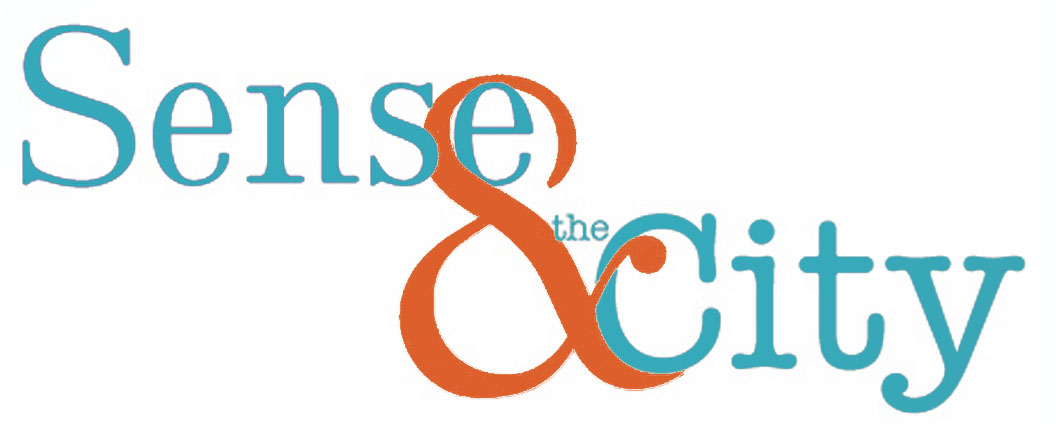
At the end of a peninsula in Red Hook, in the shadow of the abandoned Red Hook Grain Terminal and a decommissioned cargo ship, there floats an unlikely barge, a hodgepodge of salvaged wood and shoreline detritus, festooned with string lights. At various points, this transitional stretch of waterfront, then known as Brooklyn Basin, served as the terminus of the Erie Canal and housed a never-built train yard and a squatters’ community nicknamed “the Bitter Desert.” If you linger on the sidewalk, a lurking T&LC car might pull up and you might be asked: “Are you going out?”—meaning: Do you need a ride out of this no-man’s-land? But you can smile and wave them on: in fact, you’re going even deeper, to an underwater kelp farm at the mouth of the Gowanus Canal.

For the past century, this waterway, now called the Gowanus Bay Terminal (GBX~), seems to have been looking for a mission. Enter the barge’s current tenants: the RETI Center (Resilience, Education, Training, and Innovation), an environmental organization that creates experimental, sustainable models for how coastal cities can adapt to climate change and sea-level rise. It has occupied this site since 2020: the 4.5-acre plot of water is “leased” to RETI for free by the owner of the GBX~, local industrialist and concrete magnate John Quadrozzi Jr.

The barge has an equally hodgepode collection of neighbors: a special-effects studio, an auto pound, a bus company, and businesses selling produce, fire sprinklers, and moving supplies—a testament to the varied, modern uses of the urban industrial waterfront, which is RETI’s focus community.

The kelp farm is one of its innovations, funded in part by Moore Good, a family foundation that supports grassroots environmental stewardship. The kelp—which is an algae, not a plant—naturally cleanses this notorious waterway of toxins and heavy metals. Kelp has long been used as a binding agent in various industries, and RETI is experimenting with drying the kelp and pulverizing it to become an ingredient in “kelp-crete,” a concrete additive that is a sustainable alternative to Portland cement; the production of concrete is notoriously carbon-intensive.

I was shown around RETI by Tim Gilman-Sevcik, RETI’s enthusiastic and tireless executive director. In rimless glasses, a rumpled button-up shirt, and a RETI ballcap, he hopped around the barge as he talked, drilling in a bolt, fiddling with the barge’s biogas container, checking on a grad student bent over a microscope.

Braley, a young assistant in a Dickies worksuit, led me down to the kelp farm, a square patch of water enclosed by floating docks. The kelp grows on nylon ropes strung from the inside edge of the dock. The staff checks the ropes about once a week by canoe and paddleboard, perhaps more often during its peak growing season, from December through April. Cold water is conducive to kelp growth; the harvest takes place in the spring, when the water warms up. In April 2023, RETI harvested 300 feet of kelp, but left several lines in the water for continued experimentation. It recently acquired funding to quadruple kelp growth on the site.

Braley hoisted a rope from the edge of the dock, and it emerged laden with dripping, luminous brown-green sugar kelp.
The leaves are rubbery and thick, coated with a slippery, lacy web of slipgut algae and studded with hard bumps of barnacles. Braley dunked the kelp a few times to rinse it. It was smooth, pliant, and firm; I tried not to focus on the infamous Gowanus water shimmering on its surface.
However, I needn’t have worried. Whereas a few months ago, visitors and volunteers might have used rubber gloves to handle the kelp, RETI just received a triumphant report from the National Oceanic and Atmospheric Admistration, to which it had sent samples. On first-level surface tests, the RETI kelp was declared “clean,” containing only trace amounts of heavy metals—perhaps not quite pure enough to eat, but fine to touch. These initial test results are also a sign that the kelp is doing its job cleansing the polluted water. Also to this end, RETI has worked with visiting school groups to create sandcastles out of kelp-crete to use as mussel habitats, part of its Infinite Mussel Project. The sandcastles are suspended underwater and mussels attach to them and populate, further filtering the water.

In addition, floating gardens made of donated wine corks provide a field for spartina, a water-filtering marsh grass that serves as a habitat for marine life.
Back on the barge, Braley shows me samples of the dried kelp, which is hung in burlap bags.

The dried kelp is coarse and grainy, ranging from crispy flakes to rubbly bits to grainy sediment, and smells like the sea: fish and salt, hot rocks, and sun.
RETI continues to work toward its larger vision of BlueCity, an innovative industrial and commercial district of floating structures in Red Hook that would transform this waterfront into a sustainable area and would serve as a model for the resiliency of coastal cities and their communities in the face of climate change. The apotheosis of BlueCity is Schoonschip, a floating sustainable neighborhood in Amsterdam comprising 46 households and 100 residents on 30 interconnected “arks.” But in the meantime, RETI’s staff tinkers with the details, checking spools of baby kelp plants and unfurling them into the water. They may look like slimy algae clumped on a rope, but each one holds the promise of change.











 Sense & the City is a monthly blog exploring the hidden corners of New York City. Each month’s post is devoted to one of the five senses. Receive daily sensory impressions via Instagram @senseandthecity.
Sense & the City is a monthly blog exploring the hidden corners of New York City. Each month’s post is devoted to one of the five senses. Receive daily sensory impressions via Instagram @senseandthecity.


2 thoughts on “TOUCH: The RETI Center’s kelp garden”
Bravo for Kelp Farming!
Exciting, inspiring work!!! Thank you for alerting us to this hopeful work!